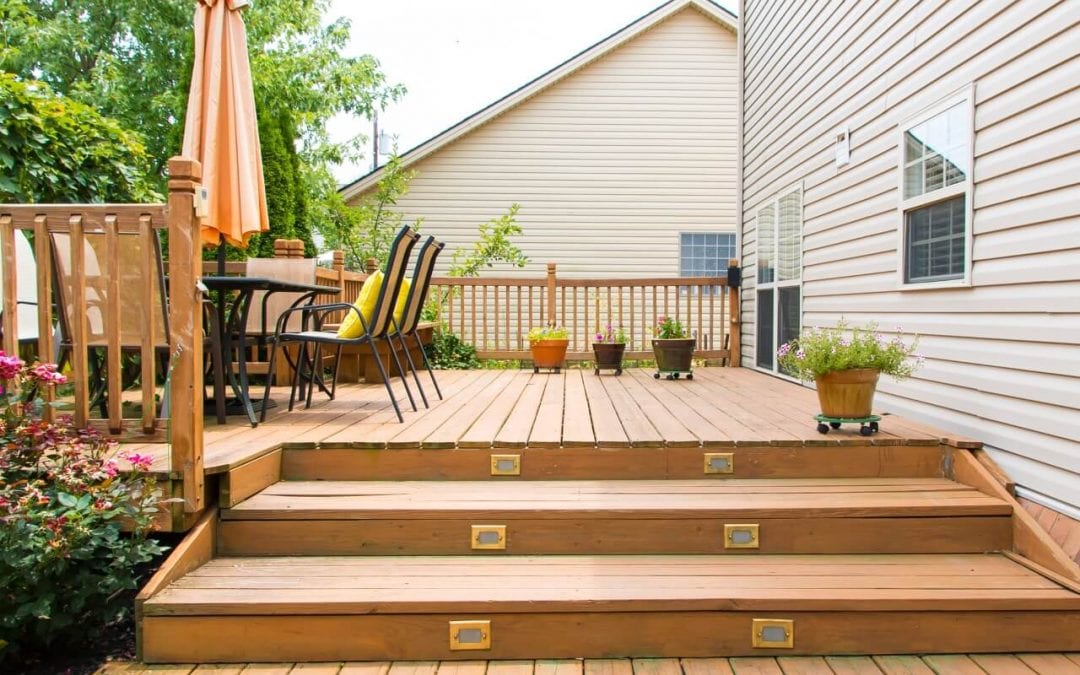Learn About Decking Materials
When you have a nice deck, you don’t have to leave the comfort of your home to find a peaceful space to enjoy. A deck adds beautiful, usable outdoor space that’s great for entertaining, relaxing, or enjoying family time. Like any major purchase, aesthetics, price, and durability will play a role in your decision to build a deck. This article will give you a basic understanding of different decking materials and help you choose which one is best for your project.
Most Common Decking Materials
Redwood
Wood is traditionally the most common material used in decking projects. Wood decks create attractive spaces with natural beauty or they can be finished to give your deck a more unique look. Redwood is one of three popular options.
Pros
• Naturally insect and rot resistant
• Warp resistant
• Highly durable
• Holds finishes easily
• Has a beautiful natural color with a look that lasts
Cons
• Needs periodic maintenance using a sealant.
• Grown on the West Coast of the US, so the farther away from the source you are, the more expensive it becomes.
• Prime redwood comes from very old trees. The use of redwood decking is not environmentally friendly.
Pressure Treated Lumber is a Common Decking Material
Pressure-treated wood helps to keep costs down. It is often used for the support system beneath the deck because it is strong, resistant to rot, and durable.
Pros
• Most inexpensive option
• Resists rot and insects
• Widely available
Cons
• Low-grade treated wood is prone to warping
• Stains easily
• Chemically-treated
Cedar
Cedar is another attractive and durable decking material.
Pros
• Insect and rot resistant
• More budget-friendly than hardwood and manufactured options
• When maintained, life expectancy of 15 years
• Holds wood stain
• Deteriorates slowly because of its natural oils
Cons
• Needs to be periodically sealed to maintain its appearance
• Splinters easily because of the softness of the wood
• Stains and scratches easily
• Without proper staining or sealing, it will turn a dingy gray color
Composite Decking Materials
Composite is a synthetic material that’s a combination of wood and plastic. Composites used to look plastic and ‘fake’, but today’s composite options more closely mimic natural wood and have become one of the most popular decking materials.
Pros
• Available in a wide range of colors, thicknesses, and patterns
• Insect resistant
• Higher quality planks are colored all the way through so surface scratches do not show up
• Stain and fade resistant
• Requires almost no maintenance
• Won’t splinter or warp
• Long lifespan
Cons
• More expensive than cedar and pressure treated wood choices
• Susceptible to mold and mildew in shadier locations
Vinyl or PVC
Similar to composite, plastic (PVC) was not popular in the past. However, PVCs are being manufactured to simulate natural wood planks and have become a more popular decking material.
Pros
• Maintenance free
• Recyclable
• Long lifespan
• No need to worry about rot, insects, warping
• Lightweight
• Color and pattern choices
Cons
• Might expand and contract in certain climates
• In the sun, plastic decks may heat to an uncomfortable temperature
Guardian Home Inspection Services provides home inspections for properties in Southwest Michigan. Contact us to schedule an appointment.

